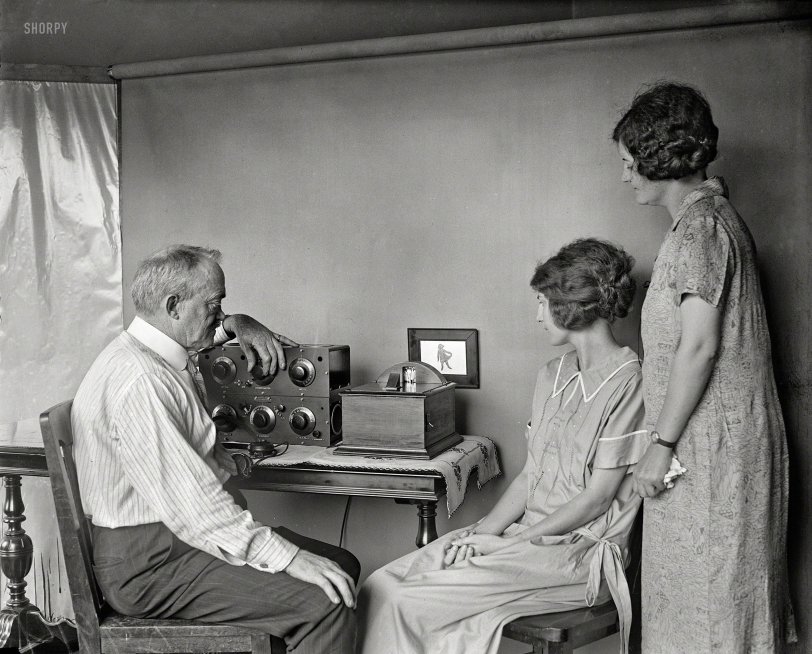


Framed or unframed, desk size to sofa size, printed by us in Arizona and Alabama since 2007. Explore now.
Shorpy is funded by you. Patreon contributors get an ad-free experience.
Learn more.

- Baldwin 62303
- Baldwin VO-1000
- Cold
- No expense spared
- Tough Guys
- Lost in Toyland
- And without gloves
- If I were a blindfolded time traveler
- Smoke Consumer Also Cooks
- Oh that stove!
- Possibly still there?
- What?!?
- $100 Reward
- Freeze Frame
- Texas Flyer wanted
- Just a Year Too Soon
- WWII -- Replacing men with women at the railroad crossing.
- Yes, Icing
- You kids drive me nuts!
- NOT An Easy Job
- I wonder
- Just add window boxes
- Icing Platform?
- Indiana Harbor Belt abides
- Freezing haze
- Corrections (for those who care)
- C&NW at Nelson
- Fallen Flags
- A dangerous job made worse
- Water Stop
Print Emporium
Radio-Vision: 1925

1925. "Motion pictures by radio are very near, predicts C. Francis Jenkins, who has designed this small radio-vision receiving set for use in the home. It is only a few inches square and is attached to the regular radio receiving set. A miniature motion picture screen is placed on the wall of your home, as shown in this photo. The first of this machine to be made. The photo was taken in Mr. Jenkins's laboratory at Washington, D.C." Harris & Ewing glass negative. View full size.
Radio is an AMRAD 3500
The radio in the picture is an circa 1922 AMRAD 3500 battery radio and the box likely contains the power supply/battery eliminator.
The sinister effects of television
Already their eyes are starting to glaze over.
C. Francis was a nervous wreck
Just look how he's gnawed his nails to nothing. Will he get on "American Inventors Got Talent" or not?
Q: What's in the box?
A: Apparently nothing, nothing that would make it work anyway. This display might be considered a kind of form study prototype. The working models that Jenkins eventually marketed looked nothing like it and were directly viewed rather than projected.
Scanning disk - a dead end
He was right that television would be produced soon (it was another 10 years), but it sure didn't use this technology.
Farnsworth and Sarnoff were the American rivals who both worked very long hours to make TV a reality. Both of them saw that the mechanical scanning method would never produce pictures with high enough resolution to be practical. So they learned the art of making big glass vacuum tubes and putting strange electrodes in them. That eventually worked.
Display technology
Uses front projection, same as my TV, though at a somewhat lower resolution.
























On Shorpy:
Today’s Top 5